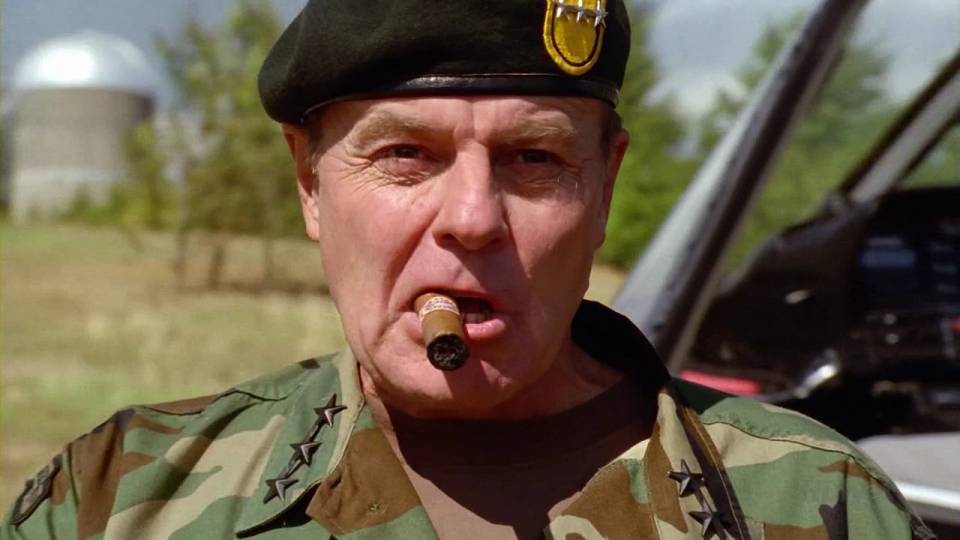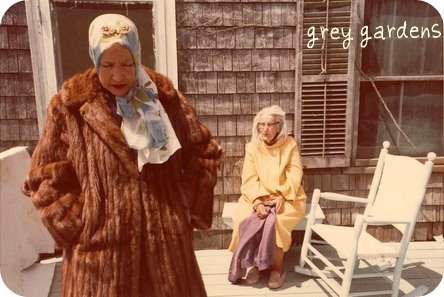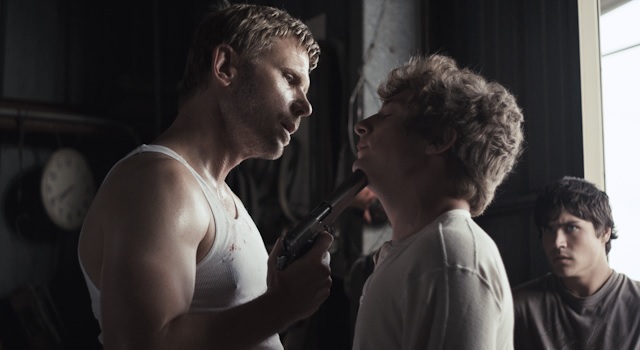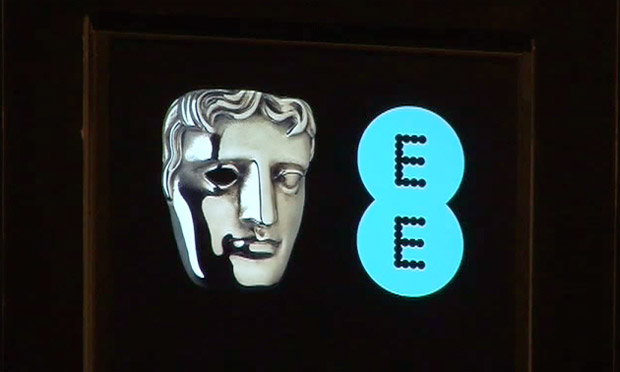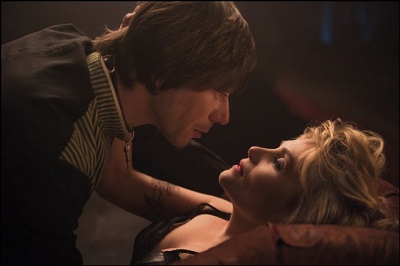Amongst Americans such as myself, there is a certain stereotype about our neighbors to the north. There’s a belief that Canadians are, for lack of a better word, nice. That during a visit to Canada, an American would be more likely to ride a moose around like a horse than hear the F-word. That hockey players are the only remotely dangerous people you could possibly meet in Canada, and even then, that they would only pummel you under the watchful eye of a referee whom they will later respectfully follow to the penalty box. This stereotype is perhaps best summed up by this scene in Michael Moore’s lone fiction film, Canadian Bacon, where Dan Aykroyd politely upbraids an invading group of American revolutionaries for not printing their anti-Canada graffiti in both English and French.
As stereotypes go, it’s a fairly positive one. But making stereotypes, even positive ones, is an awful idea. It lessens our knowledge of other people as individuals. It prevents us from gaining a full understanding of the rich and diverse human tapestry. And, worst of all, it usually comes from a place of ignorance that is enlarged and intensified each time the stereotype is deployed. In short, this a stereotype, like all stereotypes, must be shattered.
In order for Canadians and Americans to come to a better understanding, we need someone who growls the word “about” until it sounds like South Park’s Terence and Philip suffered permanent larynx damage. Someone who doesn’t look like he needs an arena, a referee, or even a reason to fight you. Someone who looks down upon the sort of boorish American that would deploy this stereotype not with parental displeasure, but with infinite contempt. We need a Canadian badass.
And, thankfully, we’ve had him around our movies and TV for more than thirty years.
How badass is Michael Ironside? Well, you might have guessed that he changed his name, but the only part of his stage name which was invented is “Michael.” Born Frederick Ironside in Toronto in 1960, his IMDB page reports that he established his badass bona fides at age fifteen (!), when he abandoned a successful arm wrestling career (!!) to write an award-winning stage play (!!!) entitled “The Shelter.” His acting career started in 1977 and has never paused, especially after breaking out first in David Cronenberg’s Scanners and then in the 1984 American TV series V.
But, look, there have been plenty of Canadian actors who have had long careers and/or appeared in American action films. What makes Michael Ironside the archetype of Canadian badassery? For you consideration, I offer my argument in four exhibits.
Exhibit A: That Voice
Evidence Label: The DC Comics Animated Universe
Michael Ironside has a voice that could make veteran astronauts in low orbit quiver in fear. It’s a bass rumble that lends authority to everything. Couple it with the sort of acting training that the man has had, and it can make even the most absurdly over-written threat sound not merely credible, but like a prophecy of a future ass-kicking that will occur only after the current demolition of some other poor fool has been completed.
Nowhere else has this been better demonstrated than in the various roles Ironside performed for Bruce Timm’s animated series and movies for DC Comics. Ironside first appeared in an episode of The New Batman Adventures titled “Legends of the Dark Knight,” where he voiced Batman in a short story based off of Frank Miller’s The Dark Knight Returns. That book almost never deploys Bruce Wayne, which makes Ironside a perfect fit, because he’s never played a milquetoast playboy in his life. In both book and cartoon, this is Batman at his most macho, in a book which Miller drenched in operatic machismo. The animated scene in question is all Batman, as Ironside’s Batman gravel-voice puts Christian Bale’s well-intentioned-but-kinda-goofy attempt to shame.
Later, Ironside turned up in the Superman and Justice League Unlimited animated series, voicing the villain Darkseid. The voice you get for this role is key for two reasons. First, the character is one of the most powerful beings in the universe, someone that only Superman could possibly beat, and he has to sound like somebody who poses a huge threat and knows it. Second, the character was created by the great Jack Kirby in the 1970s, when Kirby was at his most Kirby-tastic, which means he’s prone to spouting dialogue so purple that it passes through indigo and into ranges of the color spectrum that human eyes can’t even see:
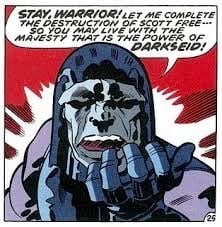 You need a guy for Darkseid who can say stuff like that, and come out the other side looking like he is ready, willing, and able to kick Superman’s teeth in. You need the voice of a mad, evil god, the most badass voice in the universe.
You need a guy for Darkseid who can say stuff like that, and come out the other side looking like he is ready, willing, and able to kick Superman’s teeth in. You need the voice of a mad, evil god, the most badass voice in the universe.
They got Ironside.
He was perfect.
Exhibit B: Effort
Evidence Label: Highlander 2: The Quickening
If you want to teach a man to be a great actor, you might show him Edward Norton in The 25th Hour. But, no matter how well he learns from that performance, he’ll probably be lucky to land roles like Edward Norton had in The Score: roles where the script doesn’t seem like anything special, you spend half the movie doing a gimmicky retarded-type thing, and the biggest legend in the movie is openly rebelling against the director on-set. Disasters, in other words, the sort of thing that can discourage any would-be great actor from doing great acting. I submit to you that, if you want to teach someone to be a working actor, someone who keeps popping up on casting agents’ lists and develops a reputation for doing the job right, you should show them Michael Ironside’s work in Highlander 2.
The movie wasn’t just a disaster, it was dead on arrival. It came five years after the first Highlander had seemingly written itself into a corner by having its immortal hero attain godlike knowledge and human mortality at the end. Most of the sequel’s funding came from an Argentine bonding company, and when Argentina’s economy cratered during filming, the funders mucked relentlessly with director Russell Mulcahy’s efforts to write himself out of that corner. All of the problems were “solved” with an amount of hand-wavey sci-fi bullshit unparalleled in the history of major-studio filmmaking.
 But Michael Ironside, playing the lead villain General Katana, does not mail in a single scene. Ironside is said to be a Method actor, and although he later succinctly described the movie in interviews as “a piece of shit,” you don’t turn off the Method just because somebody is babbling to you about aliens from the planet Zeiss. He’s intense and threatening; it would wrong to call him “scary” because nothing in the movie is remotely scary, but he did his damnedest to scare us. He did many of his own stunts, wielding a 20-pound sword in many fight scenes – according to Wikipedia, Ironside accidentally cut off part of Christopher Lambert’s finger during filming.
But Michael Ironside, playing the lead villain General Katana, does not mail in a single scene. Ironside is said to be a Method actor, and although he later succinctly described the movie in interviews as “a piece of shit,” you don’t turn off the Method just because somebody is babbling to you about aliens from the planet Zeiss. He’s intense and threatening; it would wrong to call him “scary” because nothing in the movie is remotely scary, but he did his damnedest to scare us. He did many of his own stunts, wielding a 20-pound sword in many fight scenes – according to Wikipedia, Ironside accidentally cut off part of Christopher Lambert’s finger during filming.
(Incidentally, Sean Connery also appears in Highlander 2, reprising his role from the first film despite the fact that his character was beheaded. By this point, Connery had only William Wallace as his competition for the greatest Scottish badass in all of history, with nothing left to prove to anyone. Yet he also refused to mail anything in, from his pretty-absurd resurrection to his completely-and-totally-insane departure from the story. Such is the hallmark of the true badass.)
Exhibit C: Scene-Stealing
Evidence Label: Top Gun
As someone whose age had not yet reached double digits, I spent most of 1986 thinking that Top Gun was supposed to be taken seriously. Watching it this month in preparation for this piece, I found it to be patently absurd from minute one. The mere fact that Tom Cruise is playing a rebellious character who is never called anything but Maverick is enough to send me into uncontrollable laughter, as is the seduction that begins with Maverick showing up at Kelly McGillis’ house and declaring, “I need to take a shower.” And that’s before we even get into the movie’s much-discussed homoerotic undertones. It is, in a word, unreal.
And then here comes Jester to let you know that this is the realest shit you’re ever going to see:
As a great many essays have pointed out, Maverick wins the movie without changing one iota. He’s a cocky dick in the beginning of the movie, and he is still a cocky dick at the end at the end. His character development is defined by the learning of exactly one thing, and that thing is not even a life lesson. It’s a combat tactic. It’s like a hockey movie where the only thing the hero learns is how to avoid being offsides.
But Michael Ironside is going to make damn sure that this cocky dick learns that one lesson. He’s presented in a similar fashion as Goro from the Mortal Kombat video game: a second-to-end boss who is so badass that the endboss (Tom Skerritt’s Viper) is lame by comparison. And it works: despite the fact that Jester loses his first game against Maverick, the audience is left with the feeling that Maverick just flew better than the best flier in the Navy. And when things get rocky later on, that voice of doom is there to remind him that great flying isn’t enough.
There is a lot of quotable dialogue in Top Gun, such that a lot of guys in my generation might be able to sing “You’ve Lost That Loving Feeling” or talk about the “need for speed” because of it. But there’s only one lesson that my generation took away from the movie, and we needed the United States Navy’s most badass Canadian to deliver it to us.
Exhibit D: Presence
Evidence Label: Total Recall (1990)
In 1990, Arnold Schwarzenegger was 43 years old, and still close to the very top of his game, physically. Look at that picture! Who, among us non-Predators, could possibly be a threat to that guy? Well, if you’ve been paying attention to this article, then you know who.
In some ways Michael Ironside is playing a comical under-villain in Total Recall. All he does is lose our hero in chases, shoot innocent bystanders in gunfights, and metaphorically throw lead villain Ronny Cox’s master plan in the metaphorical toilet. Sometimes I will watch this film and think he’s just an Imperial Stormtrooper without the lasers or the white armor. And then Ironside screams that scream on that subway platform, and I get drawn back in to that movie’s charms all over again.
Part of that comes from director Paul Verhoeven, who never puts Ironside and Schwarzenegger in a shot together in such a way that Arnold could simply flex a bicep and say, “Go avay, guhrlie-mahn.” But part of it is Ironside, who firmly establishes himself as the biggest nightmare in the film’s weird sort of dream logic. The film is constantly nudging the audience in the side and saying, “hey, maybe this is all just a dream? Maaayyyyyybe?” And in that hypothetical dream, Ironside would be the bogeyman, someone who enters the story without warning and is already possessed of an irrational, outsized desire to murder the dreamer and dance on his corpse.
 It’s all in the presence; nothing about a then-30-year-old bald man particularly screams “dreamlike horror,” but then the cameras come on and the audience sees the thing under the bed. And that is how you beat a stereotype. You can’t get rid of people’s preconceived notions about you with your fists or your invective. Those notions only go away when you do you, in the face of whatever anybody might have thought about you beforehand. That’s what Michael Ironside has been doing for 40 years, and it’s how he became Canada’s representative badass.
It’s all in the presence; nothing about a then-30-year-old bald man particularly screams “dreamlike horror,” but then the cameras come on and the audience sees the thing under the bed. And that is how you beat a stereotype. You can’t get rid of people’s preconceived notions about you with your fists or your invective. Those notions only go away when you do you, in the face of whatever anybody might have thought about you beforehand. That’s what Michael Ironside has been doing for 40 years, and it’s how he became Canada’s representative badass.
-Mark Young
